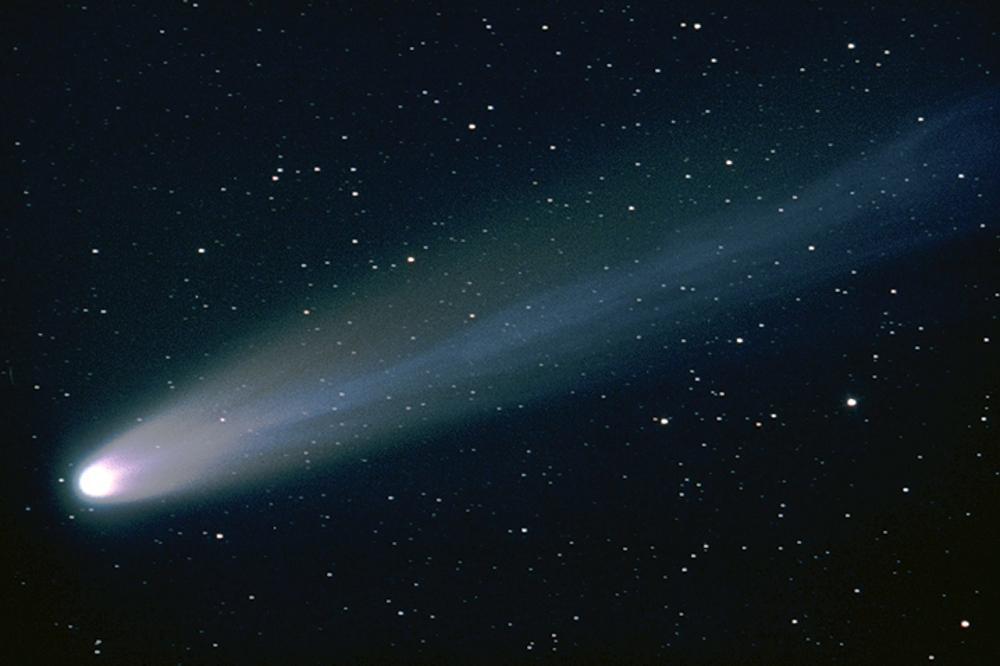NASA Exercise Reveals 72% Asteroid Collision Risk, Highlights Earth’s Big Problem
NASA recently conducted its fifth biennial Planetary Defense Interagency Tabletop Exercise to assess our preparedness for potential asteroid threats.
This exercise involved nearly 100 representatives from various U.S. government agencies and international collaborators. The scenario explored a hypothetical asteroid with a 72% chance of hitting Earth in 14 years.
Purpose of the Exercise
The exercise aimed to evaluate national and global response strategies to asteroid threats. It provided valuable insights into risks, response options, and collaboration opportunities.

Source: NASA, Wikimedia
These hypothetical scenarios help prepare for real-world situations and enhance planetary defense capabilities.
The Last Exercise
The last exercise, held in 2022, focused on responding to a short-term asteroid impact threat. In that particular case, this short-term impact threat involved a small asteroid that ultimately hit North Carolina six months after discovery.

Source: Ken Lund/Flickr
The test intended to evaluate how federal, state, and local officials would respond to a real-life situation.
The Hypothetical Scenario
Participants considered a newly detected asteroid with a 72% chance of impact in 14 years. However, initial observations were insufficient to determine the asteroid’s size, composition, or precise trajectory.

Source: Wikimedia
Further complicating the scenario, essential follow-up observations were delayed for seven months due to the asteroid passing behind the Sun.
The Hypothetical Asteroid on a Crash Course for Earth
Even asteroids at the smaller end of the range given for the hypothetical asteroid in the exercise (estimated to be anywhere from 60 meters to 800 meters across) could cause significant damage to Earth.

Source: Wikimedia/Wikimedia
While “a 60-meter asteroid impacting somewhere in the middle of the ocean” wouldn’t be a real problem, Johnson says, the same asteroid hitting land near a metropolitan area would be “a serious situation.”
The Long-Term Hypothetical
This recent exercise focused on a long-term hypothetical: the discovery of a near-Earth object that would impact with earth in 2038.

Source: Wikimedia/Wikimedia
Similarly to last year’s test, a group of participants had to grapple with the uncertainties about the object trajectory, with potential impact locations on a path that extended from Mexico and the US to southern Europe and the Middle East.
The Unknown Threats
According to NPR, astronomers estimate that there are roughly 25,000 of these near-Earth objects, which are 140 meters across or larger, but only 43% of them have been found according to data prepared for the table-top exercise.

Source: Wikimedia Commons
While this threat is looming over Earth, there are groups of researchers who are looking to the stars to find any incoming threats.
The Most Likely Scenario
“It’s the most likely scenario we would face if we’re successful in doing our search for the NEO population,” said Lindley Johnson, NASA’s planetary defense officer emeritus, at the briefing (via SpaceNews).

Source: NASA/Joel Kowsky/Wikimedia Commons
“We will know years, even decades, in advance of a potential impact threat, and therefore have the necessary time to prepare for it.”
New Participants at the Table
This tabletop exercise also included international participants for the first time, with representatives from several international space agencies like the United Nations Office for Outer Space Affairs.

Source: DEAN CALMA/Wikimedia Commons
Johnson said, “In this exercise, we wanted to examine the processes by which we would come together, both interagency and internationally, to decide what is the right course of action.”
Technological Insights from DART
The exercise utilized data from NASA’s DART mission, which impacted the asteroid moonlet Dimorphos in 2022.

Source: Wikimedia
This mission demonstrated that a kinetic impactor could change an asteroid’s trajectory, highlighting the potential for using such technology in future defense efforts.
Role of FEMA in the Exercise
FEMA played a crucial role in the exercise, leveraging its expertise in disaster preparedness and response.

Source: Freepik
Leviticus “L.A.” Lewis, FEMA detailee to NASA’s Planetary Defense Coordination Office, confirmed FEMA’s commitment to helping communities understand and prepare for potential risks, including asteroid impacts.
International Collaboration
For the first time, international collaborators participated in the exercise, reflecting the global nature of planetary defense.

Source: Cytonn Photography/Pexels
This collaboration aimed to enhance global response strategies and foster international cooperation in mitigating potential asteroid threats.
Importance of Follow-Up Observations
The scenario showed the critical need for timely follow-up observations to accurately determine an asteroid’s threat level.

Source: iStock
The seven-month delay in observations due to the asteroid passing behind the Sun highlighted potential gaps in our current observation capabilities.
Development of NEO Surveyor
NASA is developing the NEO Surveyor, an infrared space telescope set to launch in June 2028.

Source: European Space Agency
This telescope will expedite the discovery and characterization of potentially hazardous near-Earth objects, providing more time to evaluate and respond to threats before they pose an impact risk.
Findings and Recommendations
The complete after-action report will identify strengths and gaps in the current planetary defense strategy.

Source: Wikimedia
These findings will help shape future exercises and studies, ensuring continuous improvement in preparedness and response capabilities.
Quotes from Key Figures
Lindley Johnson, NASA’s Planetary Defense Officer Emeritus, emphasized the unique ability to predict and prevent large asteroid impacts years in advance.

Source: Freepik
“These outcomes will help to shape future exercises and studies to ensure NASA and other government agencies continue improving planetary defense preparedness,” Johnson said.
Role of Technology in Planetary Defense
The exercise highlighted the importance of technology in planetary defense.

Source: NASA/Joel Kowsky/Wikimedia Commons
Missions like DART and upcoming projects like NEO Surveyor are crucial for improving our ability to detect, monitor, and mitigate potential asteroid threats.
Future Outlook
NASA’s fifth biennial exercise clearly conveyed the importance of preparedness and international collaboration in planetary defense.

Source: Wikimedia
As scientists continue to develop and refine their strategies, these exercises will play a critical role in ensuring we are ready to respond effectively to potential asteroid threats.
The Results of the Test
Luckily, this tabletop exercise did not end in destruction like last year’s dramatic ending. “We actually stayed stuck in one moment in time for the duration of the exercise. We didn’t fast-forward,” says Terik Daly, the planetary defense section supervisor at the Johns Hopkins Applied Physics Laboratory in Laurel, Maryland.

Source: Getty Images
This allowed attendees to discuss how to communicate both the uncertainties, the urgent need to act, and the funding.
Researchers Suggested Two Spacecraft Missions
Once the asteroid came back into view from Earth, two spacecraft missions would need to be sent out. One of the missions would involve a flyby, estimated to cost between $200 million and $400 million.

Source: NASA/Wikimedia Commons
The other spacecraft missions would be a rendezvous with the asteroid that would cost about $800 million to $1 billion. Both of these missions would help groups on Earth better understand the asteroid and its risk of impact.
What Would Political Leaders Do?
NASA’s report on the exercise notes that “many stakeholders expressed that they would want as much information about the asteroid as soon as possible but expressed skepticism that funding would be forthcoming to obtain such information without more definitive knowledge of the risk.”

Source: Wikimedia
While representatives from space institutions had a preference for action, money is necessary, forcing the question: “What would political leaders actually do?”
The Funding Problem
While understanding the risks proposed by the asteroid, funding for both missions in a short amount of time would be unlikely. Senior leaders in the exercise favored either spacecraft option, and political leaders stated they wanted a better understanding of the asteroid risk before funding any missions.

Source: Freepik
“Examining how long it takes to pull a mission together, the flight time it takes to get to the asteroid and the launch windows that are available to get to the asteroid, that eats up a decade of time pretty fast, so that is certainly a concern looking at it from a technological standpoint,” Lindley Johnson, NASA’s Planetary Defense Officer Emeritus, said.
The Importance of Communication
The exercise also demonstrated the importance of clear and accurate communications between federal agencies, international groups, and civilians.

Source: @Ocean City Intermediate School/Facebook
“What is it that people would want to know, when would they want to know it, how to communicate it in an effective way,” said Daly.
Testing for the Future
NASA officials wrote in the same statement (via Space) that while there are no known significant asteroid impact threats for the foreseeable future, hypothetical exercises like this one, conducted about every two years, provide valuable insights into how the United States could effectively respond if a potential asteroid impact threat is identified.

Source: NASA
Being prepared for unknown objects that may or may not be floating toward Earth at destructive speeds always benefits humanity.
